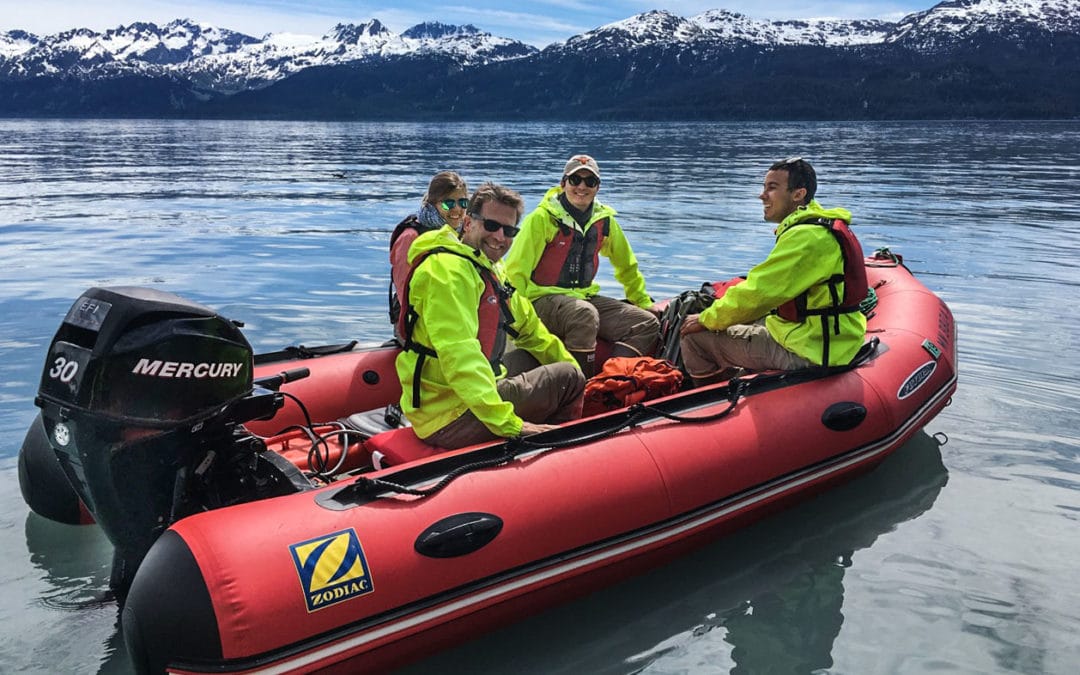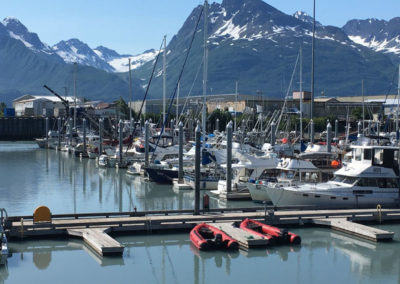Submitted by John Garver (Union College)
The 2018 Keck Alaska field team was a marine-based project that involved considerable travel by boats in cold Alaskan water. What does this mean for participants of a Keck Project? For one thing it means long days on the cold water, and limited protection from the wind and waves. It also means wearing a pair of Xtra Tuff boots and Grundens. Nice warm weather with no waves is perfect and easy, but when the waves come up and the rain starts, one feels pretty exposed riding on these boats. We have quite a bit invested in a field excursion, so things need to get pretty bad before we take a day off.
Safety matters. We have several important safety features that are built into this field approach. Foremost among them is that we travel with two boats simultaneously, and we are always in radio contact. Working on the cold wet coast typically means that visibility is low. Several years ago we made hi-visibility rain gear required, because gear that is colored black, blue, and green is just too difficult to spot on the boat or on the shoreline. Thus if you were wondering why all participants in the 2018 Keck Alaska project are so brightly colored – it’s for safety. And it works.
We travel long distances using the Zodiac boats, and this field season daily travel between 20 and 50 miles was typical. For the first part of the field season we were moored every evening in the Valdez marina, and almost all outcrops we were working on were at least 6-10 miles out. So daily we did the long run down Valdez Arm, and then we started working on outcrops. We stood out in the Valdez marina because most of the other boats were significantly larger. For the second part of the field season we were based in the remote Unakwick Inlet, and long inlet in northern Prince William Sound, and here our biggest daily challenge was getting to and from the boats with a 12-15 ft tidal range.



